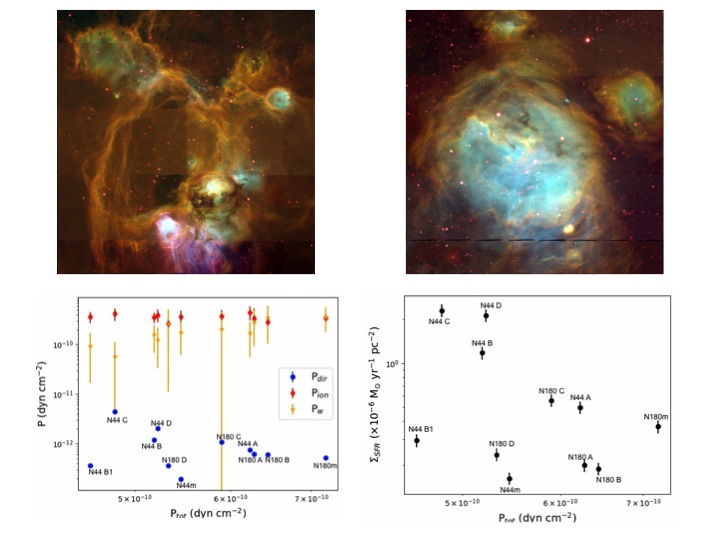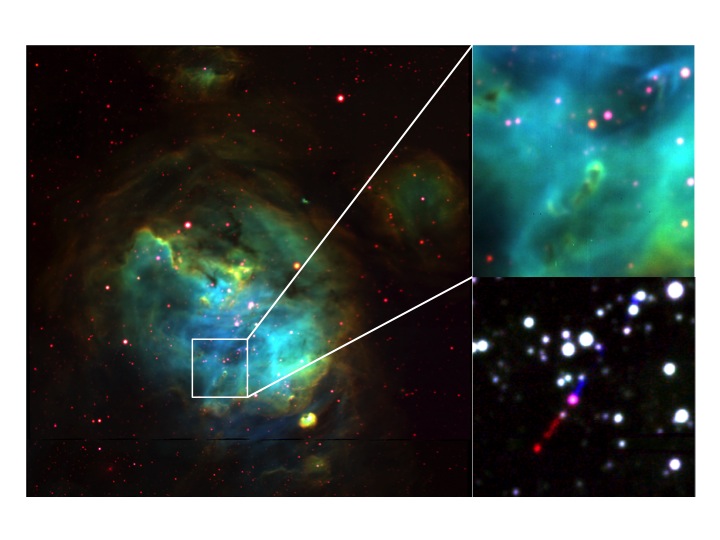
We use MUSE data from the Very Large Telescope in Chile to analyse the effect of feedback from massive stars in the low-metallicity environment of the Large Magellanic Cloud.
For 11 HII regions in total, we identify and classify the feedback-driving stars and analyse their feedback effect in terms of energy and momentum input into the surrounding matter by linking them the feedback-affected gas in the HII regions.
We analyse the role of different stellar feedback mechanisms for each region by measuring the direct radiation pressure, the pressure of the ionised gas, and the pressure of the shock-heated winds. We find the expansion of the HII regiosn is mainly diven by stellar winds and ionised gas, while the pressure imparted by the stellar radiation is up to three orders of magnitude lower than the other pressure terms. We relate the total pressure to the star formation rate and find that stellar feedback has a negative effect on star formation, and sets an upper limit to the rate at which stars are formes as a function of increasing pressure.

